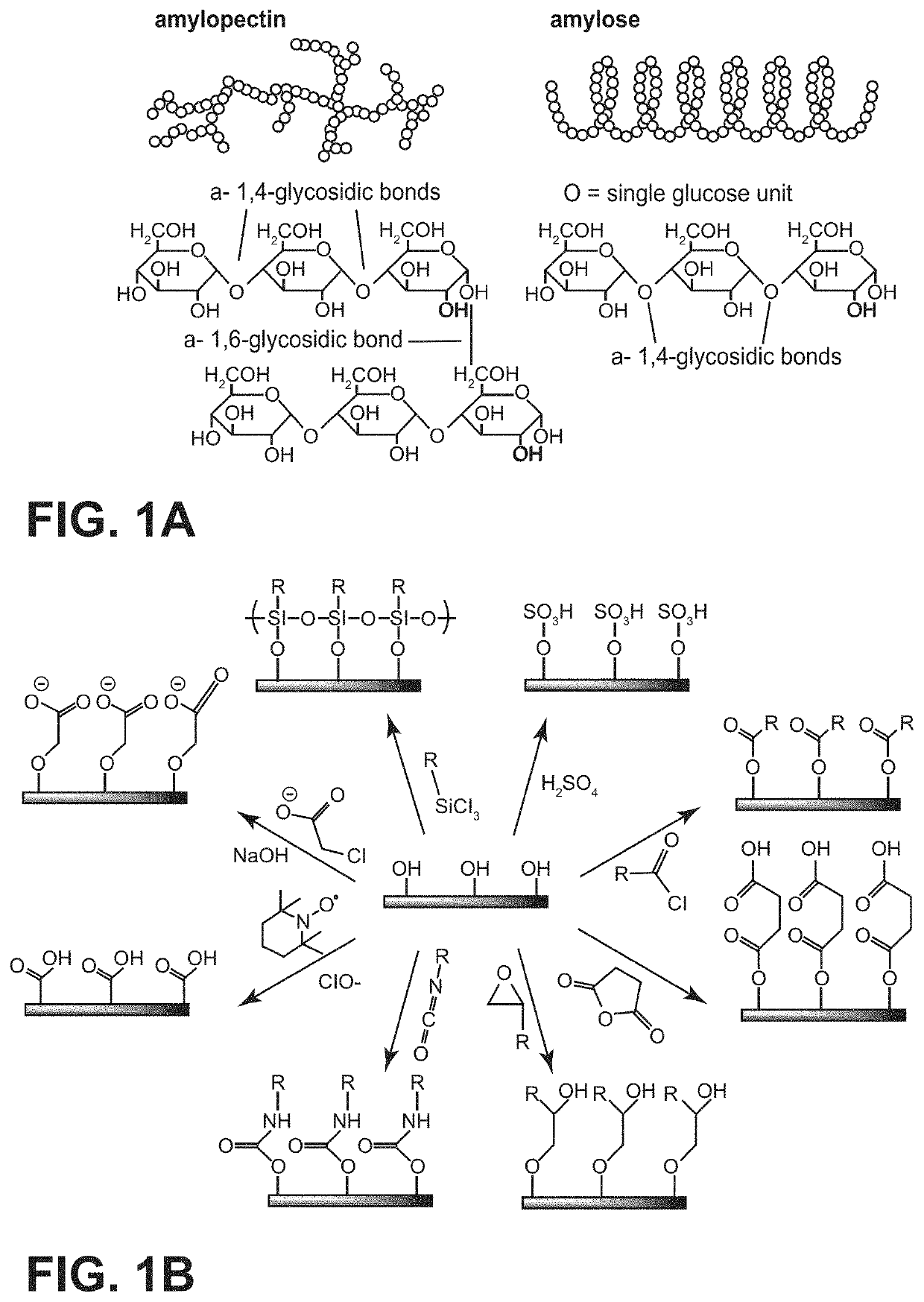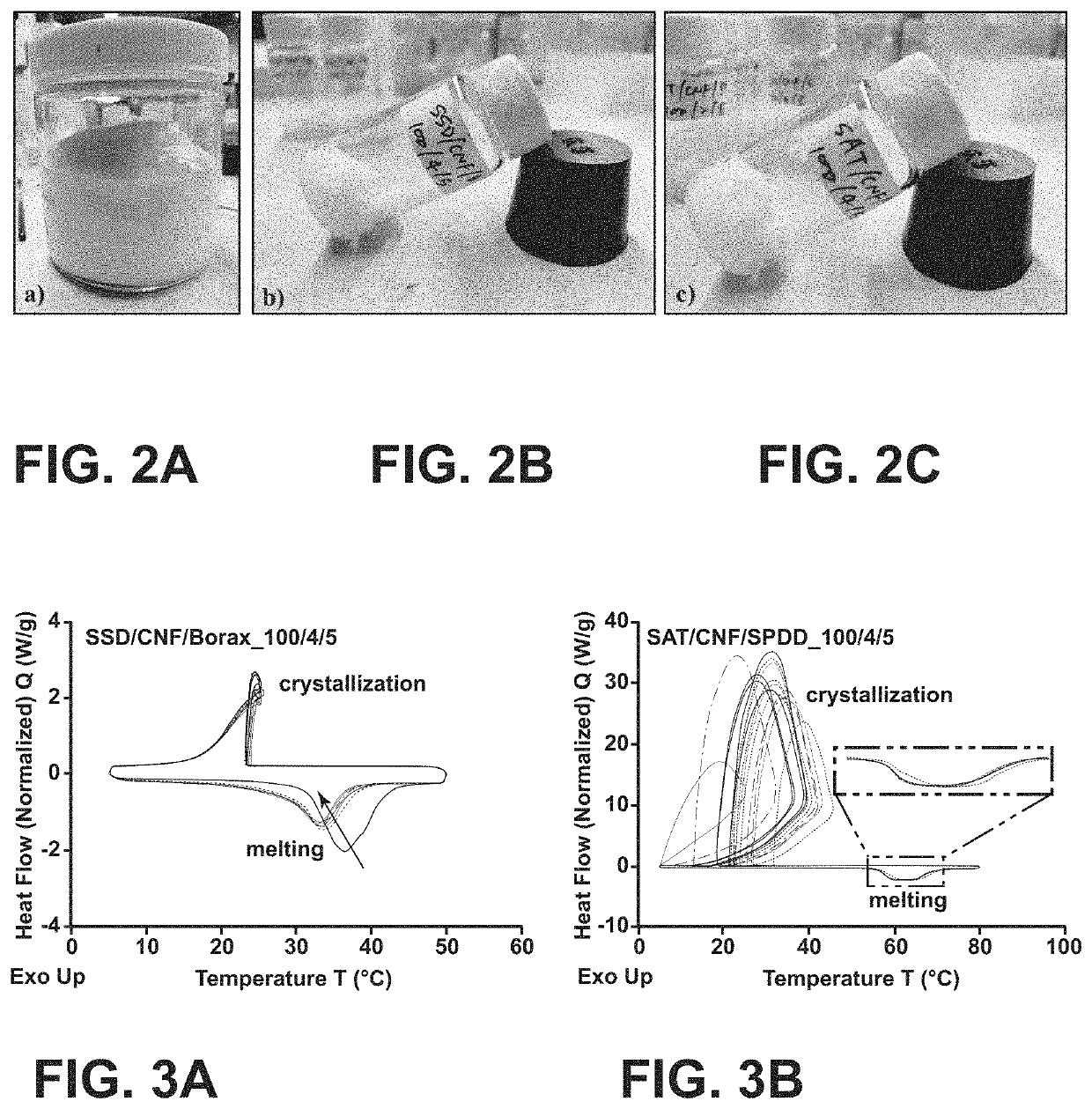Stable salt hydrate-based thermal energy storage materials
- Summary
- Abstract
- Description
- Claims
- Application Information
AI Technical Summary
Benefits of technology
Problems solved by technology
Method used
Image
Examples
example 1
Cellulose Nanofiber (CNF) as a Novel Matrix for Salt Hydrate PCMs that are Strong Hydrogen Bonding Acceptors, Such as SAT
[0047]This example shows a viable solution for preventing phase separation in SAT using CNF. CNFs are bundles of nanosized cellulose fibrils with high aspect ratio, which are held together by strong intermolecular and intramolecular hydrogen bonding. CNF is usually produced in water medium and the final aqueous CNF suspension contains over 90 wt % of water. FIG. 2A shows the picture of an aqueous CNF suspension with 3 wt % of CNF. Inspired by the strong water absorption rate of CNF, we investigated the potential use of CNF as a novel matrix for salt hydrate PCMs. Sodium sulfate decahydrate (Na2SO4·10H2O, SSD) and sodium acetate trihydrate (CH3COONa·3H2O, SAT) were used as the PCMs. Sodium tetraborate decahydrate (Na2B4O7·10H2O, Borax) and sodium phosphate dibasic dodecahydrate (Na2HPO4·12H2O, SPDD) were used as a nucleating agent (to minimize supercooling) for SSD...
example 2
Dextran Sulfate Sodium Salt (DSS) as a Stabilizing Matrix for Sodium Sulfate Decahydrate (SSD)
[0051]This example shows a successful solution for sodium sulfate decahydrate (SSD), one of the lowest-cost and highest-energy density salt hydrates, with traditionally has one of the most challenging incongruency problems.
[0052]It was shown in the previous example that the thermal cycling stability of the salt hydrate can be improved by introducing desired chemical interactions between the salt hydrate ions and the matrix material. Compared to acetate, the sulfate group from SSD is more chemically inert and cannot form hydrogen bonding with CNF, which resulted in a low thermal cycling stability observed for the SSD / CNF / Borax composite (FIG. 4A). To solve this problem, we used a modified polysaccharide matrix for SSD, known as dextran sulfate sodium salt (DSS). DSS is a sulfonated dextran (polysaccharide derived from the condensation of glucose) with sulfate ions directly attached to the po...
example 3
Cellulose Nanofiber (CNF) and Dextran Sulfate Sodium Salt (DSS) as a Stabilizing Matrix for Sodium Sulfate Decahydrate (SSD)
[0055]The ability of salt hydrate PCMs to maintain shapes upon melting and freezing is equally important to thermal cycling stability and energy storage capacity, as liquid leakage may happen due to low viscosity of the molten salt hydrates. We developed a method to solve this issue by using both CNF and DSS as a composite matrix. This example shows the use of this novel composite matrix with SSD for the preparation of form-stable PCMs with high thermal cycling stability and high energy storage capacity. In this composite, CNF physically thickens the ionic solution of the molten sodium sulfate to achieve shape stability, and DSS chemically stabilize the ions to achieve thermal cycling stability. FIG. 8A shows a photo of the prepared PCM composite taken in its molten state. No flow of the material was observed, indicating the effectiveness of using CNF as a phys...
PUM
 Login to View More
Login to View More Abstract
Description
Claims
Application Information
 Login to View More
Login to View More - R&D
- Intellectual Property
- Life Sciences
- Materials
- Tech Scout
- Unparalleled Data Quality
- Higher Quality Content
- 60% Fewer Hallucinations
Browse by: Latest US Patents, China's latest patents, Technical Efficacy Thesaurus, Application Domain, Technology Topic, Popular Technical Reports.
© 2025 PatSnap. All rights reserved.Legal|Privacy policy|Modern Slavery Act Transparency Statement|Sitemap|About US| Contact US: help@patsnap.com



